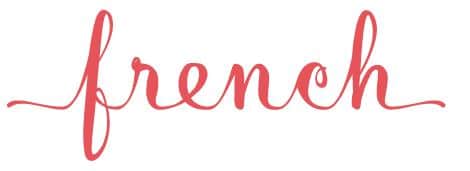Here is one mistake that you might make as you’re learning how to speak French. Or maybe you have a little more awareness about this difficult situation and you simply pause in the middle of your sentence wondering “Aaah these French pronouns! Is it EN or Y? If only there was an easy way to figure this out!”
Guess what. There is.
Vous êtes prêt?
First of all, let’s just remember what pronouns are for. They exist so that you don’t have to repeat yourself, they replace a piece of the sentence you just spoke.
For instance, you would never say… Voici mes chiens, mes chiens sont très gentils, j’adore mes chiens. Here are my dogs, my dogs are very sweet, I love my dogs. That would be heavy and redundant. So you say:
Voici mes chiens, ILS sont très gentils, je LES adore. Here are my dogs, THEY are very sweet, I love THEM. Ils and les are pronouns. Thanks to them you don’t need to repeat yourself.
Today we will focus on EN and Y. Why? Because people mix them and don’t know which one to use when.
So let’s fix this because it’s very easy!
Let’s start with EN
We just showed EN’s function is to replace something from the previous sentence. It replaces the complement introduced by the preposition “DE”. Don’t forget DE also comes in the shape of DU singulier masculin, DE LA singulier féminin, DE L’ singulier before a vowel, DES pluriel.
Par exemple: Do you want some wine? You’re not going to answer Yes I want some wine. You will either say Yes I want some or No I don’t want any. Same thing for us:
Voulez-vous DU vin? Oui j’EN veux or Non je n’EN veux pas. The preposition before le complément vin is DU.
Il y a DE LA place dans cette pièce? Is there space in this room? Oui, il y EN a. Non, il n’y EN n’a pas.
Est-ce que tu vois DES médecins pour ton dos? Are you seeing doctors for your back? Oui, j’EN vois. Non, je n’EN vois pas.
See the pattern? That’s it. You do have to spot the preposition DE but now when do, you know what to do!
Moving on to Y
2 different things to take into account here.
Y is the pronoun that means there, and you probably already know that.
Par exemple: Tu vas chez tes parents demain? Are you going to your parents’ tomorrow? Oui, j’Y vais. Non, je n’Y vais pas.
Straight forward, it’s not the one you get mixed up with.
Remember how EN is introduced by de? In the exact same fashion, Y is introduced by À. Don’t forget À comes in various shapes also: AU singulier masculin, À LA singulier féminin, À L’ singulier before a vowel, AUX pluriel.
Par exemple: Je pense À mon travail. I think of my work. J’Y pense.
Tu crois qu’elle s’opposera AU changement? Do you think she will oppose this change? Oui, elle s’Y opposera. Non, elle ne s’Y opposera pas.
Vous avez fait attention AUX plantes? Did you take care of the plants? Oui, nous Y avons fait attention. Non, nous n’Y avons pas fait attention.
You see? Now be careful! This only works if you’re talking about things, not people. What do you say then? Watch my videos French Pronouns Made Easy parts 1 & 2. (attached below)
So in summary. You use EN & Y so you don’t have to repeat yourself. You use EN when you see DE in the previous sentence, and Y when you see À.
Facile, non?







 in 3 easy steps
in 3 easy steps